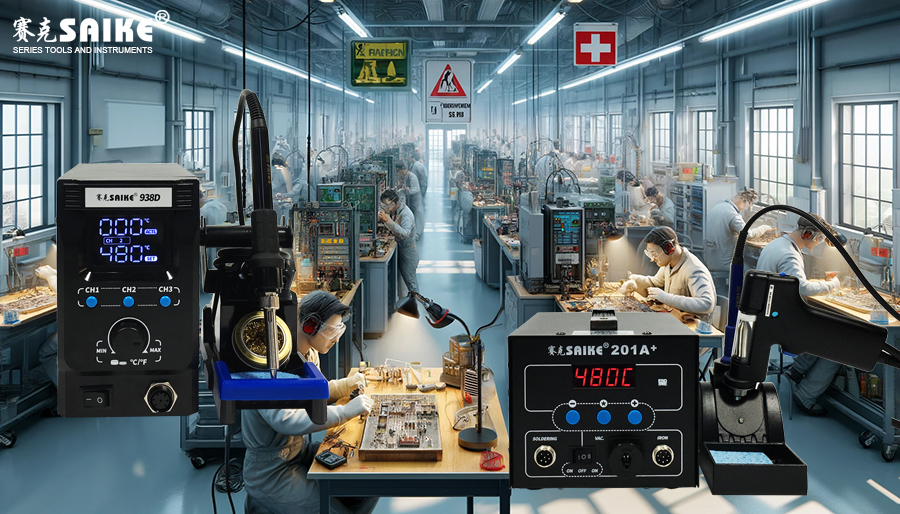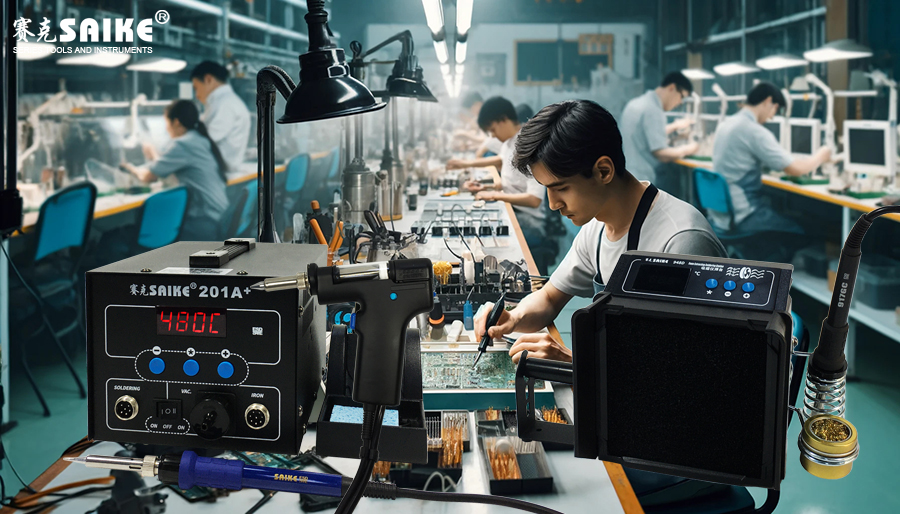
SK-YJ000HT-KP 100039
Soldering station welding mainly involves electronic components and precision work, and its safety and protective measures differ from large-scale welding work. Although soldering station welding usually involves lower voltage and current, and the risks are relatively small, appropriate safety measures still need to be taken to prevent accidents. The following is a detailed introduction to accident prevention and emergency treatment methods specifically for soldering station welding operations.
I. Prevention of soldering station welding accidents
1.Welding Environment
– Ventilation: Although soldering station welding produces relatively less smoke, good ventilation is still required to ensure air quality in the work area, especially when handling solder containing lead or other toxic materials.
– Lighting: Provide sufficient lighting to ensure that the operator can clearly see the welding area and components, avoiding misoperation due to poor visibility.
2.Use of Appropriate Personal Protective Equipment (PPE)
– Protective glasses: Wear safety glasses to protect your eyes from UV rays, bright light, and any possible splashes.
– Protective gloves: Although the heat generated by soldering station welding is relatively low, wearing heat-resistant gloves when handling hotter welding equipment and components can prevent burns.
3.Correct Use of Welding Equipment
– Equipment maintenance: Regularly inspect soldering station equipment to ensure that components such as soldering pens, soldering iron tips, and power cords are in good condition, preventing accidents caused by equipment failure.
– Compliance with operating procedures: Operators should strictly follow the equipment operation manual and safety guidelines and not exceed the specified scope of equipment use.
II. Emergency treatment of soldering station welding accidents
1.Dealing with burns and minor injuries
– First aid measures: The work area should be equipped with a first aid kit, including basic first aid supplies such as cold packs, band-aids, and disinfectants. For minor burns, immediately rinse with cold water for at least 10 minutes.
– Emergency rescue: For more severe burns or other emergencies, immediately call an emergency number for professional medical help.
2.Response to Chemical Accidents
– Chemical spills: If harmful chemicals (such as flux) are involved, appropriate measures should be taken to prevent spills, and chemical spill kits should be used for clean-up. Ensure that all chemicals are properly labeled and stored in suitable containers.
3.Fire Emergency Response
– Fire extinguishing equipment: Although the risk of fire caused by soldering station welding is low, the work area should still be equipped with appropriate types of fire extinguishers for unexpected needs.
III. Conclusion
Although soldering station welding has lower risks compared to traditional welding, strict safety measures and emergency preparations are still required. Through preventive measures and appropriate emergency response plans, the likelihood of accidents can be effectively reduced, ensuring the safety of operators and the smooth progress of production. By following these guidelines, welding work can be carried out in a safe and healthy environment.


